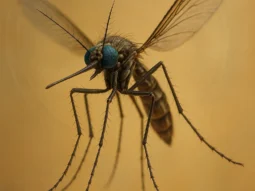
Texas Pest Control Regulations Guide
In Texas, the food industry faces a formidable opponent: pests. Whether it's a bustling restaurant in Austin or a food processing plant in Dallas, maintaining a pest-free environment is non-negotiable for safety and compliance. I've seen firsthand how even a minor infestation can escalate into a full-blown crisis, jeopardizing both public health and a business's reputation.
That's why Texas food regulations are stringent when it comes to pest control. As someone who's navigated these rules for years, I understand the importance of meeting the state's standards. It's not just about avoiding fines; it's about protecting customers from the health hazards pests can bring. From rodents to insects, each unwanted guest can be a carrier of harmful bacteria, making effective pest management essential.
Understanding Texas Food Regulations
As I delve deeper into Texas's regulatory environment, it's vital to spotlight the complexity and breadth of the Texas Food Establishment Rules. These regulations are structured into various subchapters, each addressing specific areas of food safety and establishing a framework that food businesses must navigate to maintain a pest-free environment.
Digging into Subchapter B: Management and Personnel, I find that these provisions cover the roles and responsibilities of staff within a food establishment. Leadership plays a crucial role in enforcing hygiene standards and pest control measures. This is where training becomes paramount, ensuring every employee understands their part in upholding food safety.
Moving on to Subchapter C: Food, the emphasis is on the sourcing, storing, and handling of food items. Strict guidelines ensure that food remains uncontaminated from pests, which can carry pathogens like Salmonella and E. coli. Food safety is non-negotiable, and any breach could have significant repercussions.
When we consider Subchapter D: Equipment, Utensils, and Linens, it's clear that the state recognizes the importance of cleanliness and proper maintenance. Pests often seek out food residues in kitchens, and these rules help in mitigating such risks by establishing standards for clean and sanitary equipment.
Subchapter E: Water, Plumbing, and Waste highlights the need for adequate sanitation facilities. Pests thrive in areas with poor waste management, and Texas regulations mandate strict waste disposal practices to deter infestations.
In Subchapter F: Physical Facilities, I note the requirement for a facility's structure to act as a barrier against pests, with specifics on construction materials and design that discourage pest entry and habitation.
Lastly, Subchapter G: Poisonous or Toxic Materials outlines the safe storage and handling of chemicals that could be hazardous. These need to be managed carefully to prevent cross-contamination of food and surfaces.
For mobile food units like food trucks, there's an extra layer of regulation to consider. They're not only expected to comply with the same stringent pest control measures but also to operate from a Central Preparation Facility (CPF) that adheres to federal guidelines. This ensures the entire operation, from food prep to sale, aligns with top-tier food safety practices.
Remember, the ramifications of non-compliance go beyond mere citations; they can lead to foodborne illness outbreaks and irreparable damage to a business's reputation.
Importance of Pest Control in the Food Industry
The food industry in Texas faces constant challenges with pests, which can lead to severe consequences if not managed properly. As a seasoned expert in the industry, I understand that pest control is not just about eliminating bugs or rodents; it's about safeguarding the entire food supply chain. Let's delve into why maintaining robust pest control measures is crucial.
Preventing Contamination
Pest infestations can turn a clean, well-managed food establishment into a hotbed for contamination. These critters, from flies to rodents, are notorious for transferring pathogens as they move from filth to food surfaces. A single pest is enough to introduce bacteria such as E. coli or Salmonella into the food preparation areas, with the potential to spread to hundreds of consumers.
Understanding the Texas Food Establishment Rules, food businesses must adhere to strict standards of:
- Sourcing and handling food to prevent pest access.
- Storing foods away from walls and off the floor, making it less hospitable for pests.
- Ensuring food packaging materials are secured from contamination.
- Maintaining an environment with no evidence of pest activity, especially in food storage areas.
Given these rigorous requirements, it's no surprise that comprehensive pest management is more than just a regulatory checkbox—it's a critical aspect of running a food enterprise in Texas.
Ensuring Food Safety
Ensuring food safety doesn't stop at the refrigerator door. Every aspect of food production, from receiving to holding, must fall under the banner of adequate sanitation principles. Quality control checks are vital in spotting early signs of pest infestations, which can lead to devastating consequences if left unaddressed.
Employing Integrated Pest Management (IPM) strategies, which go beyond just removal methods to concentrate on prevention and management, is the gold standard for food safety. Adopting IPM methodologies aligns well with:
- Guarding against allergen cross-contact and contamination.
- Rejecting, treating, or reprocessing any food that's become adulterated.
- Maintaining a high level of food hygiene through strategic, science-based approaches.
Ultimately, for Texas' food industry, pest control isn't a one-and-done deal—it's a vigilant, ongoing process essential for protecting public health and upholding the integrity of the food we consume.
Texas Food Regulations for Pest Control
Licensing and Certification Requirements
I've learned that the regulations in Texas maintain rigorous standards when it comes to licensing and certification for pest control in the food industry. Technicians and applicators must undergo a comprehensive vetting process that ensures they are well-equipped to deal with pest management professionally and safely. It's mandatory for individuals conducting pest control to be associated with a licensed business or to hold a commercial or noncommercial applicator license from the Texas Department of Agriculture.
A detailed review of the rules reveals that all license applicants must satisfy specific educational and experience prerequisites, which could include formal training programs approved by the state board. In Texas, insurance coverage is also a crucial mandate designed to protect against damages arising from pest control activities. Operators must possess adequate amounts of insurance, with variable requirements based on their classification of operations.
Here's a quick rundown of what’s required:
| Requirement | Description |
|---|---|
| Licensure | Technicians must have a license indicating approved training and qualifications. |
| Training | A state-approved training program is essential for licensure. |
| Insurance | Providers must have sufficient insurance to cover potential damages. |
| Continuous Education | Licensees might need ongoing education to stay updated with the latest pest control methods and regulations. |
Inspection and Monitoring Procedures
Inspection and monitoring are vital parts of the pest control regimen in the Texas food industry. Texas regulations stipulate that a business holding a structural pest control business license undergo at least one field inspection every two years. This policy helps maintain high standards of service provision. However, the frequency of inspections can be increased for businesses or applicators that have previously violated the regulations.
Texas takes a proactive approach by requiring food establishments to follow stringent quality control operations, ensuring that their manufacturing, processing, and holding of food adhere to the highest sanitation principles. These establishments must operate under the supervision of skilled individuals responsible for overseeing comprehensive sanitation programs.
| Inspection Element | Details |
|---|---|
| Frequency | At least once every two years, more often for violators. |
| Quality Control | Continuous quality control to ensure food safety. |
| Oversight | Sanitation under supervision of competent individuals. |
| Consumer Safety | Education about proper cleanup procedures after pest control applications. |
Integrated Pest Management (IPM) Practices
Implementing Integrated Pest Management (IPM) strategies is emphasized heavily as part of Texas' commitment to food safety. The focus is on creating an environmentally responsible approach to pest control that minimizes risks to human health, beneficial organisms, and the environment. By utilizing comprehensive information on pest life cycles and their interaction with the environment, IPM strategies emphasize preventive techniques and least-toxic control methods first.
The state mandates educational programs on IPM for schools, ensuring that any environment where children are present remains as safe and healthy as possible. Schools must avoid applying pesticides during school hours, ensuring a minimum of 12 hours lapse before children return.
| IPM Strategy | Explanation |
|---|---|
| Prevention | Establishing measures that make the environment less conducive to pest infestations. |
| Control | Utilizing least-toxic methods as initial pest control measures. |
| Education | Providing necessary training on IPM strategies, especially in sensitive areas like schools. |
| Documentation | Maintaining accurate records of pest activity and control measures applied. |
My research into Texas food regulations for pest control has confirmed that maintaining a pest-free environment in the food industry goes beyond mere elimination of critters; it requires a structured, knowledgeable approach with a strong emphasis on safety, prevention, and continuous monitoring.
Implementing Effective Pest Control Measures
Proper Sanitation Protocols
Maintaining proper sanitation protocols is a fundamental step in pest management that can't be overlooked. In my experience, preventive measures are far more effective and less costly than dealing with an infestation after it occurs. It's essential that food storage facilities adhere to strict guidelines, such as ensuring that all foods are stored off the floor and away from walls to prevent access by pests. These measures help in creating an environment that is less attractive to pests, thereby reducing the likelihood of infestation.
Additionally, I've noticed that special attention to cleanliness helps to eliminate potential feeding and breeding sites for pests. For example, keeping food packaging materials elevated protects them from coming into direct contact with pests on the floor. In every aspect of food safety, the principle is clear: an ounce of prevention is worth a pound of cure.
Regular Maintenance and Repairs
An often underestimated aspect in the fight against pests is the need for ongoing maintenance and repairs. Cracks in walls or gaps in window seals may invite pests into a facility. Conducting regular checks and fixing any structural issues promptly are critical strategies. Effective maintenance includes regularly inspecting the premises for signs of deterioration and implementing repairs without delay to prevent pests from entering.
Moreover, installing barriers or screens can serve as a physical deterrent to insects and rodents. Keeping facilities in top condition is not just about aesthetics; it's about safeguarding the food products from contamination and maintaining a clean, pest-free environment.
Chemical and Non-chemical Control Methods
When it comes to actively managing pests, both chemical and non-chemical control methods have their places. It's imperative that any use of insecticides, pesticides, or rodenticides is conducted by a certified commercial applicator. They ensure that these substances are used in a manner that's not only effective for pest eradication but also conforms to safety regulations, minimizing the risk to food products and human health.
In parallel, non-chemical approaches such as traps or the introduction of natural predators are a part of Integrated Pest Management's environmentally friendly methods. These methods focus on long-term prevention and create an unsustainable environment for pests. It's this dual approach of responsible chemical use and innovative non-chemical strategies that forms the backbone of a robust pest control program, tailored to meet the stringent requirements of Texas's food safety regulations.
Training and Education for Food Handlers
Recognizing Signs of Pest Infestation
In my experience with food industry regulations in Texas, knowledge about pest infestation signs is crucial for every food handler. The early detection of a pest presence can be the difference between a minor issue and a full-blown infestation. Pest droppings, damage to packaging or structures, and sighting of the pests themselves are clear indications that there might be an uncontrolled pest problem. It's not just about spotting a single insect but understanding the patterns that suggest an established presence. For instance, grease marks and tracks could indicate rodent pathways, while discarded wings might suggest termite activity. Being able to identify these signs is an integral part of any food handler's training.
Proper Handling and Storage of Food
To further complicate matters, poor handling and storage of food can attract and sustain various pests. Ensuring that food is stored off the floor and away from walls is a necessary preventive strategy. It limits pests' access to food sources, making the environment less inviting. It's vital to understand that certain foods, especially those that are sweet, starchy or contain protein, are incredibly appealing to pests like rodents, flies, and roaches. Implementing and maintaining excellent storage practices not only complies with Texas food safety regulations but also reduces the likelihood of a pest infestation. Additionally, maintaining proper temperatures for various food types is another critical component. For example, perishable foods should be kept at or below 41 degrees Fahrenheit to prevent microbial growth and pest attraction.
Reporting and Communicating Pest Incidents
When a pest incident occurs, quick and effective communication is essential. According to Texas regulations, it's important that I immediately report any signs of pest activity to the appropriate facility manager or owner. Not only is this crucial for taking timely actions, but also for stored foods that might be at risk of becoming contaminated. It's my responsibility to ensure that any pest-related incidents are documented and reported following the immediate reporting procedures outlined in Texas's integrated pest management standards. By keeping open lines of communication and promptly reporting, I play an essential role in maintaining a safe food handling environment and protecting consumers' health.
Conclusion
Adhering to Texas food regulations for pest control isn't just a legal necessity; it's a cornerstone of consumer safety and trust. By implementing rigorous sanitation practices, maintenance routines, and a mix of pest control methods, businesses can effectively safeguard their premises. Remember, ongoing education for staff about pest detection and prevention plays a pivotal role. When everyone's on board with these protocols, the result is a clean, pest-free environment that upholds the high standards of food safety Texans expect and deserve.
We hope you enjoy these informational articles. If you'd like to learn more about our eco-friendly pest control services, call (844) 955-2447.
Read More
Your Path to a Pest-Free Home or Business
Romex Pest Control
We are committed to protecting you, your children, and your pets with our eco-friendly, child-friendly, and pet-friendly guaranteed pest control solutions.
Romex Pest Control is fully insured and licensed in Texas, Oklahoma, Louisiana, and Mississippi.
Service Areas:
Hours
M-F 8 am–5 pm
Sat 8 am–2 pm
Sun Closed
Established 2016 © Copyright 2025 Romex Pest Control










